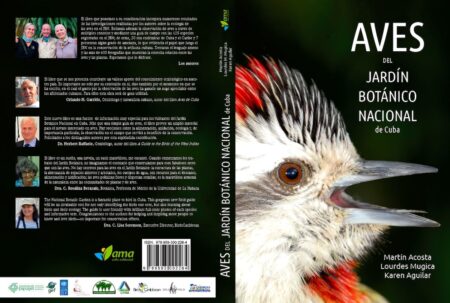
At almost 500 hectares, the National Botanical Garden of Cuba offers a green oasis to birds, other wildlife, and people, in the capital city of Havana. It is well known for its extensive collection of palm trees, ethno-botanical displays, greenhouses, and serene Japanese Garden. From November to February it is an ideal place to see migratory birds, while some of Cuba’s iconic endemic and native birds can be seen year-round.
The new field guide “Birds of the National Botanical Garden of Cuba” (Aves del Jardín Botánico Nacional de Cuba) is the most comprehensive, authoritative, and up-to-date work of its kind. We speak with the dedicated authors Dr. Martin Acosta, Dr. Lourdes Mugica, and MSc. Karen Aguilar, about the field guide. They share the extensive research that went into its creation, how the team persevered through numerous setbacks, their surprising finds and fond memories at the garden, and advice for aspiring field guide authors.
What inspired you to create a field guide to Birds of the National Botanical Garden of Cuba?
It is a long love story between our group and the birds of the National Botanical Garden. In 1982, Dr. Martin Acosta began tutoring an undergraduate’s thesis on the garden’s birds. Since then, he realized that, with its almost 500 hectares and varied vegetation, it was a privileged place, despite the fact that at that time less than 40 species were detected. From there we carried out and published several studies on the ecology of the species that inhabited the different areas that make up the garden.
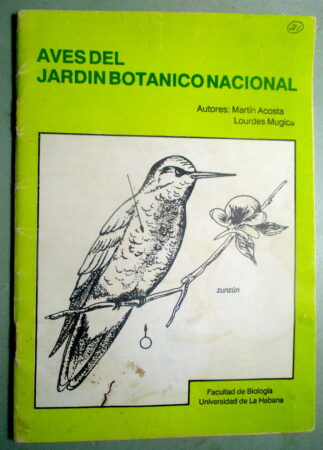
Later, in 1990, we published a short rustic guide to identify the 41 birds we had recorded at the garden. As we had no camera or way to obtain the illustrations, Dr. Vicente Berovides, Professor at the University of Havana, drew each of the birds by hand with pencil. Incredibly, his drawings were good enough to identify the birds! That simple guide sold out quickly, so very early we could appreciate that the public was eager to get this kind of information.
From the year 1990, the well-known Special Period arrived in Cuba, with a deep economic crisis that did not allow us to travel to the field and investigate the waterfowl of the rice fields and natural wetlands that were the main focus of our research in that period. That fact resulted in all our energy and time being focused on the birds of the garden, where we traveled by bicycle from before dawn to monitor their bird populations and assemblages, to do several ecological studies, and to assist our students in their undergraduate theses.
Over time our knowledge of the place and commitment to sharing our results were increasing. Both Martin and Lourdes thought that we were going to retire without fulfilling the dream of having a book for the general public. At the time we did not have any funds to guarantee writing, editing, design, and printing. Even without the funds, but with all the accumulated knowledge of more than 30 years, in 2019 we got the final push when Dr. Banessa Falcón, Director of Teaching and Research of the National Botanical Garden, insisted on the importance of achieving this book. Karen joined the authors to contribute voluntarily with the design, photography, and anything else that was needed.
Similarly, Neyda Izquierdo, winner of the National Publishing Award in Cuba, edited the book free of charge. Additionally, Dr. Banessa Falcón, supported us in working on the book from its inception and was our scientific editor for the botanical topics.
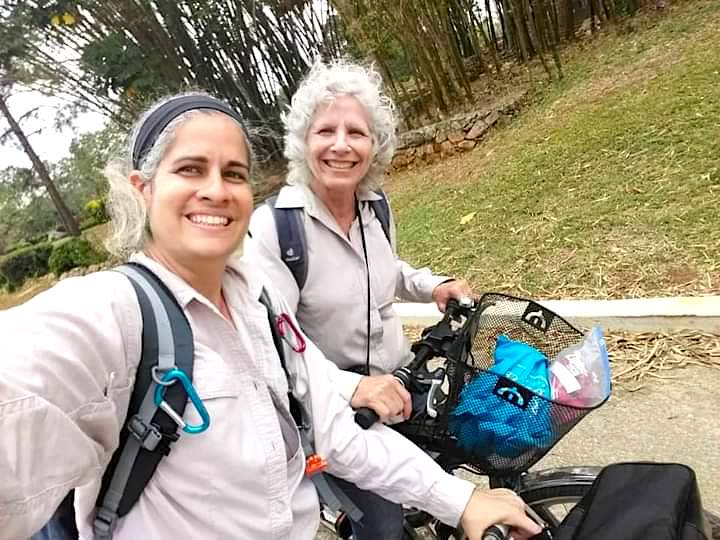
In this way, we managed to assemble a fantastic team, with whom the work became a constant exchange of ideas between wonderful people, who dedicated many hours to ensure the quality of the text in the pandemic times. In the end, it was a collective work, full of love, commitment, science, and fun!
Today, within 55 years, the garden has an assemblage of birds that has tripled in diversity in response to the vegetation development. So far 128 species, (three of them after publishing the book) have been registered, so this group of vertebrates is among its greatest attractions.
Undoubtedly, this was the great moment to bring to light the work that seemed to be just a dream for so long. Our research shows the importance that a well-managed anthropogenic (man-made) site can have for the conservation of birds. In addition, we hope that this field guide may be a useful model to other botanical gardens in Cuba and the world.
How is this field guide different from other Cuban bird guides?
It differs in several aspects:
- It is the first Cuban bird guide made entirely with photographs of birds; the guides that currently exist in Cuba are based on illustrations.
- The biggest difference is that it includes closeup images of the heads of most bird species (85%), which allow you to appreciate important details that are not visible in general photos or drawings.
In Chapter Four of the field guide, each family has a general picture with the main characteristics of the family and then, all the species within the family are presented. Each species has between two to six pictures; icons and text complete the descriptions.
- It is the first guide that dedicates a chapter to the interdependence between the development of plant communities and the assemblages of birds that use them, in addition to revealing different aspects of the ecology of some notable populations. The guide also includes a chapter that encourages bird watching in Cuban society and offers strategies for its development.
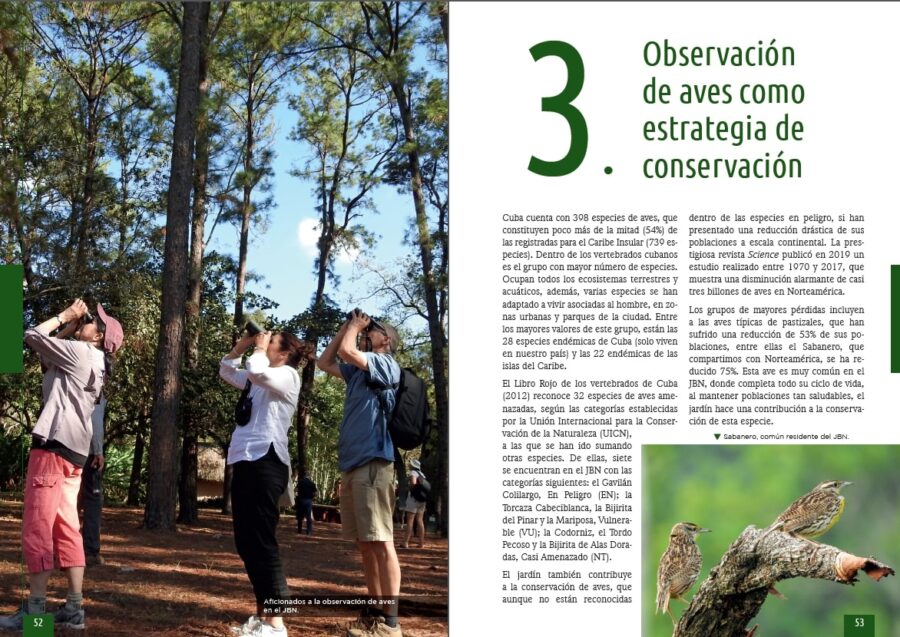
- It is a field guide based on the original scientific results obtained by the authors from more than 30 years of research, not on a bibliographic compilation, and it includes a chapter where many of these results are shared.
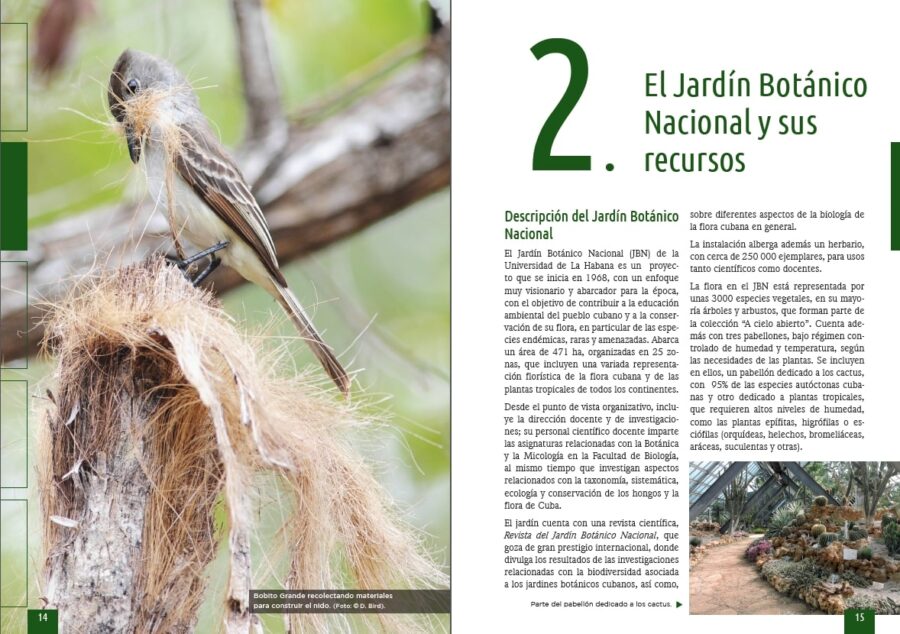
- The incorporation of informational boxes within the text of the general chapters is also new in Cuban bird guides. They offer a deeper understanding of the scientific elements, and were obtained by the authors in this botanical garden.
- The book focuses on an ex situ conservation institution, dedicated primarily to the conservation of plants, which now joins a small group of botanical gardens around the world that have their own bird guide.
- In the Field Guide chapter, 125 species are presented with 473 photos. Although the authors provided 70% of the pictures, the rest are from the selfless collaboration of 52 Cuban and foreign photographers, so this guide is a result of solidarity for the good of conservation.
- Soon after the guide was published, we received a national award from the Cuban Book Institute (First Prize for Technical Scientific Criticism 2022) and the Prize for Best Scientific Book of Natural Sciences from the University of Havana. It is the first Cuban bird guide to achieve these recognitions within the country.
Tell us about your team of authors—how did each contribute?
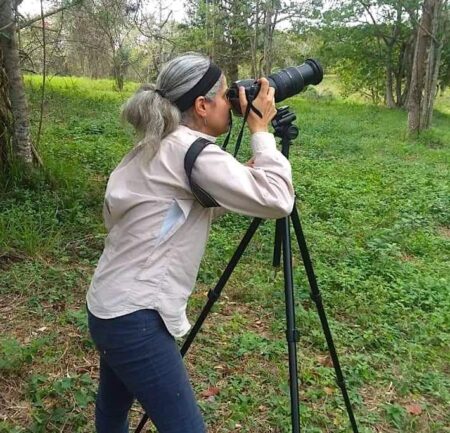
Martin and Lourdes had the general idea of writing a bird guide since 1990, when we first published a much simpler version. Both of us contributed with our long experience, field data, and results from published studies. We wrote most of the text, and did the exhaustive revision of each version. Martin also contributed numerous photographs that are used in the field guide.
But it was Karen who designed the book and supplied most of the photos. She spent many hours doing fieldwork during the book’s development, and processed the images for the guide. She also wrote some informational boxes.
The three authors worked closely and intensively during the two and a half years it took to complete the book. We also actively participated in the final revision of the text, together with the general and scientific editors.
How much research did you need to do for this field guide?
That’s a good question, because we never worked to make a field guide, we worked to contribute to the knowledge of the natural history of the birds that live in the garden, and the more we learned, the more questions arose. So we carried out research on reproduction, territoriality, feeding, seed dispersal, and composition and structure of the assembly of birds associated with some types of vegetation. The findings have all been very useful in writing the book.
What we can say is that it is not enough to know the list of birds that have been recorded in a site. It takes years of observations, and countless hours of fieldwork, to study essential aspects of the ecology of the species of birds that live there to contribute to their knowledge more effectively.
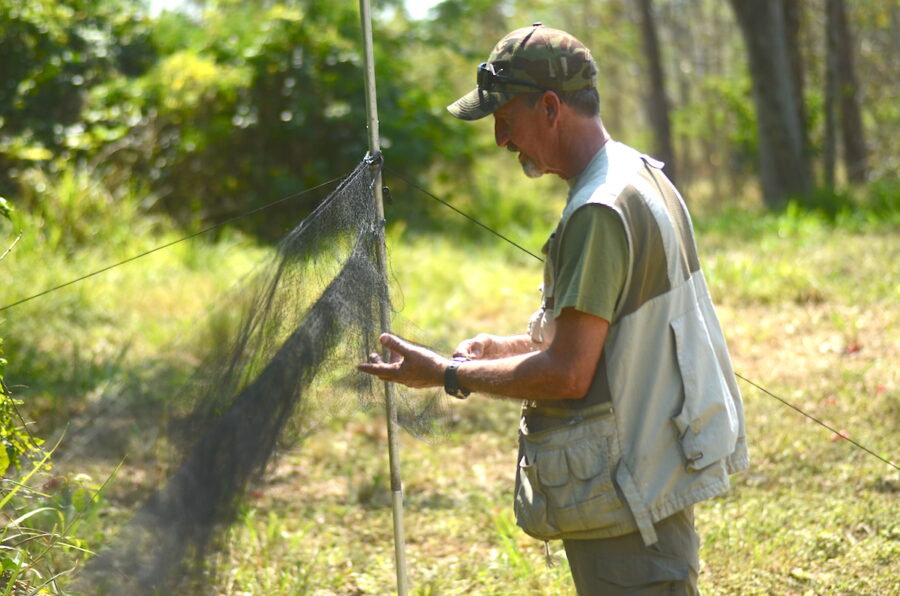
What part of creating this field guide—writing, photographing, designing and editing—did you have the hardest time with or find most challenging?
Photography and design were the biggest challenges of this book. Photography, because we set out to create a guide based entirely on photos, and getting good-quality photos of 125 species, many of which are rare or difficult to photograph because of their behavior, such as aerial insectivores, was really a major challenge. At the end all species have photos and each species identification page has between 2 to 6 photos.
The design was challenging because it was Karen’s first design job, so taking on that task involved long hours of intense work. Both challenges were successfully overcome.
In general, it was challenging to achieve our goal that both the writing and the design were attractive to a very wide audience, including children, young people, adults, birdwatchers, and specialists in the subject.
What helped you to stay focused on such a large project?
First of all, the love of birds. Knowing that a book like this can have a great impact on Cubans and contribute to bird conservation also motivated us. Little by little, we realized that the garden can contribute a lot to local knowledge and the appreciation of birds, helping people to value not only their beauty, but also all the ecological services they provide.
Secondly, it is not easy to visit our protected areas because they are located in isolated areas that are difficult to access and transportation is scarce. However, the National Botanical Garden is situated close to Havana (only about 30 km or 18 miles) and can be easily visited by the population of the city.
Finally the teamwork, which was fabulous and exhilarating. It kept us together and working hard from start to finish. Every photo achieved, every chapter completed, every species completed, was an achievement we thoroughly enjoyed and it kept us excited to reach the next goal.
What was one of the most surprising things you learned while creating this field guide?
We learned important things related both to the birds, as well as to perseverance and the strength we have to achieve our goals.
As for the birds, we were impressed by the beauty and complexity of the birds’ heads—the close-up photos highlighted details that are not captured with binoculars or full-body photography.
Another thing that surprised us was the important role played by the Red Silk Cotton Tree (Bombax ceiba) in the early months of the year, when very few plants bloom in the garden. In January and February, this tree is covered with beautiful red flowers and numerous birds are attracted to them, but not only in search of insects, nectar and pollen. The most surprising thing is that the flowers accumulate a lot of water, and the birds use them as natural sources, to quench their thirst, in these months of intense dryness.
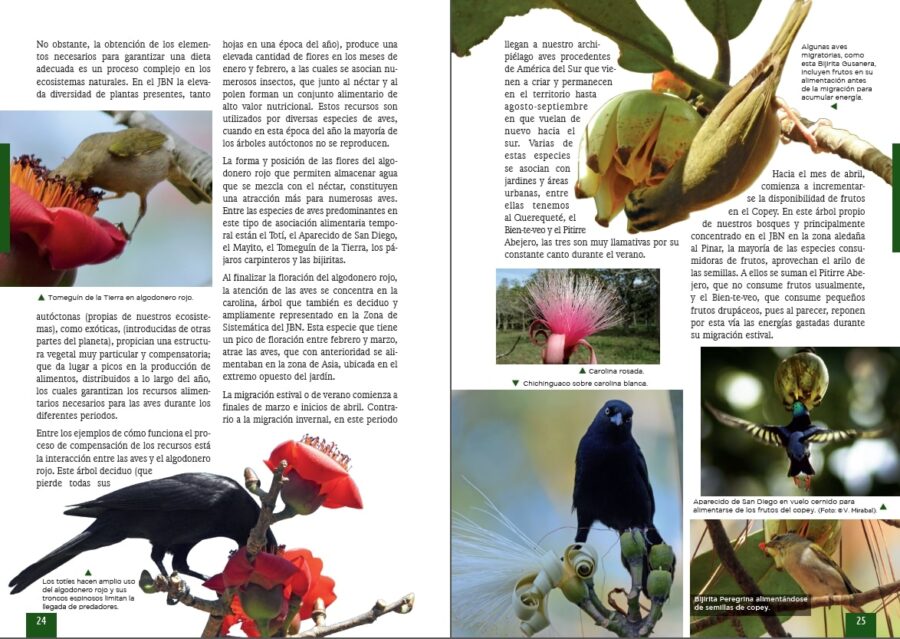
For Martin and Lourdes, it was not difficult to write the text, they knew the site and the birds well and already had the experience of working on other books. But for Karen the challenge was immense, she did not know about design, nor photography, nor was she able to recognize the bird species. All this knowledge was necessary to complete the book.
That involved numerous hours of self-study to learn how to work CorelDraw, Photoshop, and InDesign programs. So Karen took photography courses, studied the content of the main bird guides that have been published in America, and learned the particular style of providing the information in the field guides. At the same time, she made frequent visits to the field to take photographs, and learn to recognize the birds, and she kept working on the book every single day during those years.
Any fun stories to share during the process of writing, photographing, design, and editing?
There were many stories. At first Karen said she wanted the guide to be with photos, so that it would bring something different from other Cuban guides. When she tried to take her first photos, a mockingbird and a sparrow, after much effort, she did not achieve anything with her lens—at that moment she realized that the road was going to be long, difficult, and that she had a lot to learn.
I remember when we went to the zoo to take close-up pictures of the herons. They were asleep with their heads lowered and eyes closed. Yelling at them was the only way to wake them up. We shouted wildly and the moment they woke up Karen took the photo very fast. People passing by looked at us as we were screaming at the herons and by the looks on their faces, they thought we were crazy. We really laughed a lot.
Another day, Karen went alone on a motorcycle to the garden to take photos. When entering the garden, she saw a group of puppies crossing the fence and stopped the motorcycle to play with them. But the puppies ran after her which gave her a good scare. She had to run so they wouldn’t bite her.
How long did it take to complete the field guide?
We started in June 2019, the book was ready to print in January 2022. During Covid we had an interruption of about six months in which we were totally isolated without communication, (not all in the team had a good cellular phone to use the internet), and without the possibility to visit each other as we were not able to meet. So we would say that it took approximately two intense years to complete the book.
When the lockdown restrictions were lifted, we established a method of working that allowed us to advance relatively quickly, because at the same time that we were advancing in the text, we worked on the design. We made constant visits to the garden, looking for photographs that helped us explain the text, and with those visits we were constantly updating the information.
In fact, up to 2019, when we started working, 105 species had been registered; in 2022 that number had already risen to 125.
How did you celebrate when the field guide was completed?
The five of us, three authors and two editors, were so happy, we could not believe that we had finished the book. When we saw the first print proof the emotion was immense! We celebrated it by spending time together and sharing each of our experiences.
How many endemic birds live in the garden?
Of the 27 living endemic species in Cuba, 10 are found in the garden; and also 12 of the 20 species reported as endemic for the West Indies—making a total of 22 species in this category.
In the book we report on nine Cuban endemics, but recently the Cuban Trogon was recorded for the first time at the garden!
What is one of your fondest memories of birding in the Botanical Garden?
Every time we visit the garden we enjoy it so much and we learn something new about the behavior of the birds so it is difficult to say. For example, seeing the sunrise and the awakening of the birds, seeing for the first time the Cuban Tody, a typical bird of our well-preserved forests, seemed incredible to us, and recently, we just observed the Cuban Trogon for the first time!
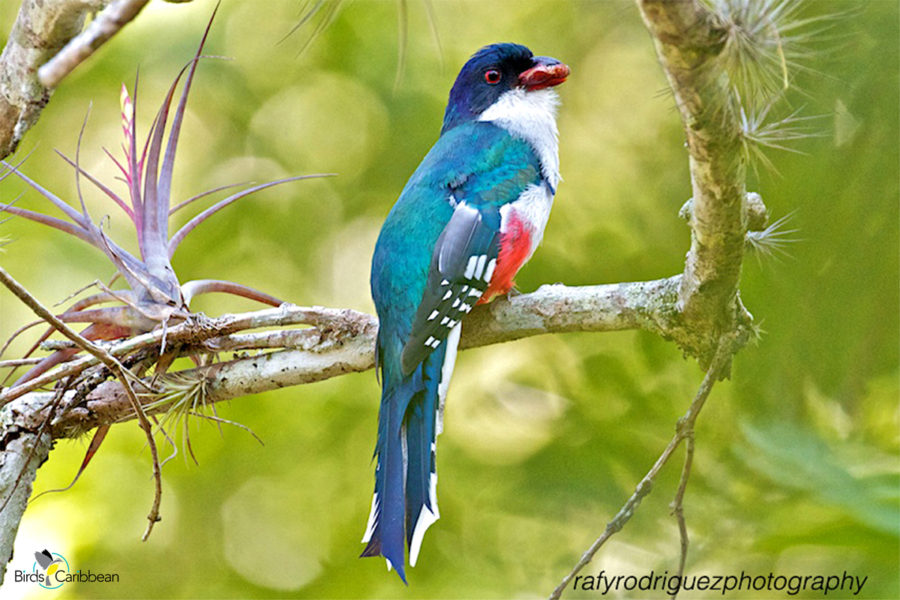
I remember one time when it started to rain, and we had to place the camera under the umbrella to take the photos. That day we registered two new species and got several quality photos for the book, it was unforgettable!
Recording a new species and getting a quality photo that we needed, of a bird doing an activity that we mentioned in the text, was always exciting to us. I can say that the three of us thoroughly enjoyed each visit, which in those last two years amounted to more than 60.
Where in Cuba can someone purchase this field guide?
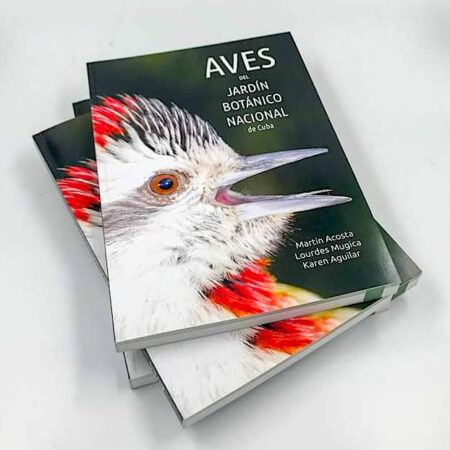 Right now it is not for sale. We have a small first batch of just 300 printed books and very high demand. The first copies have been used to promote the book and they have been given as a prizes in competitions and festivals, as well as gifted to outstanding nature photographers, decision-makers, and some libraries.
Right now it is not for sale. We have a small first batch of just 300 printed books and very high demand. The first copies have been used to promote the book and they have been given as a prizes in competitions and festivals, as well as gifted to outstanding nature photographers, decision-makers, and some libraries.
The second printing will be made this year, thanks to a grant from the Betty Peterson Conservation Fund from BirdsCaribbean. We are thinking of selling copies from this second batch at the National Botanical Garden or in the Library of the University of Havana, Alma Mater, in the City of Havana.
How can someone outside of Cuba get their own copy?
We hope to eventually sell the book through BirdsCaribbean’s website.
Do you plan on providing an English translated version of this field guide?
We would love to have an English version and the idea is to seek funding in the future for translation, design, and proofreading.
What would you say to a birder who is thinking of publishing his own field guide?
Keep going, never stop, work hard, visit the site as many times as you can, and record species, behaviors, dates and places. When you gather enough information, find a good team and work together. A good field guide is a collective work, which can help birds and people.
We have always lived in a poor country under a strong blockade, with few resources, little transportation, lots of communication problems, and high migration of young personnel. If we could succeed, then anyone who proposes a project like this and puts in the effort, perseverance, and love will succeed too.
Our small Caribbean countries need to know their natural heritage, and be aware first of what we have, so that later they become aware of the responsibility of each one in taking care of it. We all can contribute in some way to conservation. Books like this are the first step to take—knowledge brings appreciation, appreciation is an important step for conservation.
You can, you should.
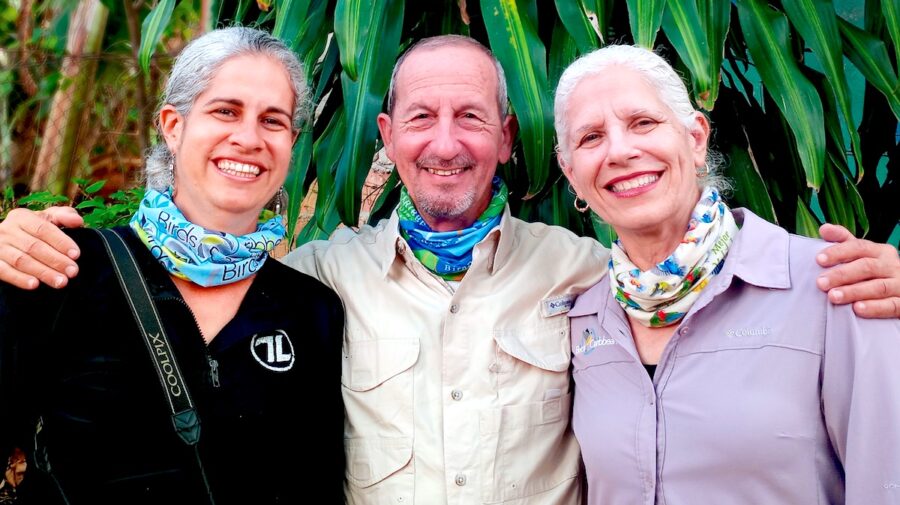
Drs. Lourdes Mugica Valdés and Martin Acosta Cruz are Professors at the University of Havana’s Faculty of Biology in Cuba. They teach both formal ecology courses and in the faculty’s research and environmental education programs. They, along with Karen Aguilar Mugica, are members of the University of Havana’s award-winning Bird Ecology Group (BEG). The BEG is widely recognised for its contribution to our knowledge of Cuban waterbird ecology. They are, moreover, long-standing members and friends of BirdsCaribbean.








